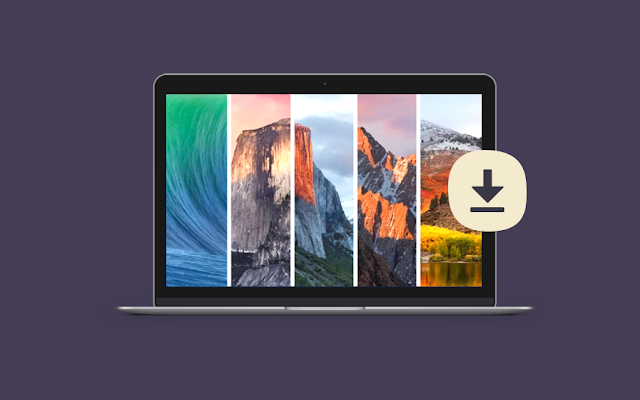In today's fast-paced technological world, laptops have become an integral part of our daily lives. They serve as our portable workstations, entertainment hubs, and communication tools. However, unlike mobile phones that are frequently upgraded, laptops tend to age out slower due to their higher cost and longer lifespan. As a result, many users face challenges with the performance, compatibility, and security of their aging laptops and their operating systems. To address these issues, Microsoft and Apple should consider launching a lite version of their operating systems specifically designed for aging laptops, with limited features and support for basic software applications.
Challenges of Aging Laptops and Their Operating Systems
As laptops age, their hardware components and operating systems may not keep up with the demands of modern software and applications. Older laptops may struggle with slow performance, software incompatibilities, and security vulnerabilities. Operating systems that were once supported with regular updates and patches may no longer receive adequate support, leaving users at risk of security threats and compromising their overall user experience. This can lead to frustration and decreased productivity for laptop users who rely on their devices for work, communication, and entertainment.
Solution: Launch of Lite Version OS for Laptops
To address the challenges faced by aging laptops, Microsoft and Apple can consider launching a lite version of their operating systems. This lite version would be specifically designed for older laptops and would offer limited features and support for basic software applications. The lite version OS would be optimized for resource utilization, focusing on performance, compatibility, and security, tailored to the capabilities of aging hardware.
Benefits of Lite Version OS for Aging Laptops
The introduction of a lite version OS for aging laptops can bring several benefits to users, including:
- Extended Lifespan of Laptops: By offering a lite version OS that is optimized for aging hardware, Microsoft and Apple can extend the lifespan of laptops that may not be capable of running the latest full-featured operating systems. This would allow users to continue using their laptops for a longer duration without having to invest in new hardware, reducing electronic waste and promoting sustainability.
- Better Performance and Compatibility: The lite version OS would be optimized for resource utilization, resulting in improved performance and better compatibility with software applications. This would enable users to run basic software applications smoothly on their aging laptops, ensuring a seamless and productive user experience.
- Enhanced Security and User Experience: With regular updates and patches, the lite version OS would provide enhanced security measures to protect aging laptops from security threats. This would ensure that users can continue to use their laptops without worrying about security vulnerabilities that may exist in older operating systems. Additionally, a lite version OS with a simplified user interface would offer a user-friendly experience, catering to the needs of older laptops users who may not be familiar with complex operating systems.
- Cost Considerations: The cost considerations of upgrading to a new laptop can be a significant factor for many users. Purchasing a new laptop can be a substantial investment, especially if the existing laptop still meets basic needs but struggles with performance and compatibility due to an outdated operating system. Launching a lite version OS specifically for aging laptops can provide a cost-effective solution for users to extend the lifespan of their laptops without the need for expensive hardware upgrades.
How Microsoft and Apple can Implement Lite Version OS
Microsoft and Apple can implement a lite version OS for aging laptops by considering the following approaches:
- Limited Features and Support for Basic Software Applications: The lite version OS should be designed to cater to the basic needs of users, offering essential features and support for basic software applications such as web browsing, email, document editing, and multimedia playback. Unnecessary features that may require higher system requirements can be omitted to optimize resource utilization and performance on aging hardware.
- Simplified User Interface and Resource Optimization: The user interface of the lite version OS can be simplified to ensure ease of use for older laptop users who may not be familiar with complex operating systems. Resource optimization techniques, such as reducing background processes and unnecessary animations, can be implemented to minimize resource usage and enhance performance on aging hardware.
- Potential Impact on the Laptop Market and User Adoption: The launch of a lite version OS for aging laptops can have a significant impact on the laptop market and user adoption. Many users who are hesitant to invest in new laptops due to cost considerations or environmental concerns may find the option of a lite version OS appealing. This can potentially lead to increased user adoption and extended lifespan of laptops, reducing electronic waste and promoting sustainability.
Moreover, the introduction of a lite version OS can also benefit users in developing countries or regions with limited access to high-end hardware. It can provide an affordable option for users to utilize their aging laptops and continue to meet their basic computing needs without the need for costly hardware upgrades.
My View: Embracing Lite Version OS for Aging Laptops
As laptops tend to age out slower and are often more expensive compared to mobile phones, the launch of a lite version OS by Microsoft and Apple can be a viable solution to extend the lifespan of aging laptops. By offering limited features and support for basic software applications, optimized performance, and enhanced security, a lite version OS can provide a cost-effective and sustainable option for users to continue using their aging laptops. This can contribute to reducing electronic waste, promoting sustainability, and catering to the needs of laptop users who may not require high-end hardware for their basic computing needs. There's more where this came from! Explore "G R Team Sites" for additional content on various topics.



